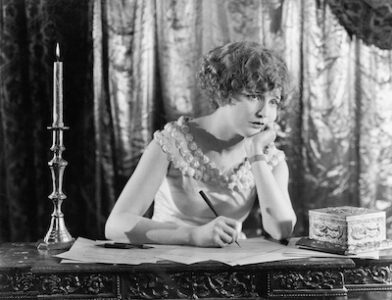 I just read a charming book, and I’d like to be able to write one. But what exactly is charm? The word comes (from Latin by way of Middle French) from carmen, an incantation, and even today it can mean an enchantment, a magic spell. Yet we often also use it in a different, more secular sense to mean —I quote the Oxford Dictionary here — “the power or quality of delighting, attracting, or fascinating others.” Although, with all due respect to Mr. Oxford, that doesn’t quite capture the essence of charm, or else every good book could be considered charming. In French, the Larousse definition comes a little closer to the truth: “a singular and mysterious attraction exercised over someone by someone or something.” What stands out here is the mysterious nature of charm. You know it when you see it, but it isn’t easy to define.
I just read a charming book, and I’d like to be able to write one. But what exactly is charm? The word comes (from Latin by way of Middle French) from carmen, an incantation, and even today it can mean an enchantment, a magic spell. Yet we often also use it in a different, more secular sense to mean —I quote the Oxford Dictionary here — “the power or quality of delighting, attracting, or fascinating others.” Although, with all due respect to Mr. Oxford, that doesn’t quite capture the essence of charm, or else every good book could be considered charming. In French, the Larousse definition comes a little closer to the truth: “a singular and mysterious attraction exercised over someone by someone or something.” What stands out here is the mysterious nature of charm. You know it when you see it, but it isn’t easy to define.
The book I read is La Dentellière d’Alençon (The Lacemaker of Alençon) and despite the difference in time and place, plot and characters, it reminded me of Eva Ibbetsen’s fictionalized autobiography, The Morning Gift. The common denominator? Charm. Both dealt with harsh subject matter — Ibbetsen was a Jew whose wealthy, cultured family fled Vienna just before the War, to find themselves reduced to poverty and hardship in England. But the overall effect was that of sweetness and delight, so much so that even years after I read it, the evocation of that book makes me all warm and sparkly.
So how do these two authors and others like them manage to hit the G-spot of charm? I’ve isolated a couple of traits they share, but keep in mind that after all is said, charm is a singular and mysterious quality.
1. They’re well written, very well written.
That alone exercises a delightful pull on the reader, who is in happy awe at the writer’s skill. If he’s like me, he says to himself, “I wish I had written that!”
2. The characters are richly drawn, lovable, and eccentric.
The cast of The Lacemaker was so wonderfully quaint and colorful that I’ll never forget them. Picture the cluster of old blind women full of curiosity and pizazz who leave their home in the poorhouse to hit the street in the company of another denizen, a narcoleptic, and end up saving the day for the heroine. These seventeenth-century grannies rock!
3. An upbeat, magnetic protagonist leads the cast.
I really wanted to say “a charming protagonist”, because that’s where the magic starts. These people—women in both of these cases—are spunky, indomitable, and easy to fall in love with. Their outlook is so sunny that even terrible things that befall them are transmuted into gold. You want to know them in real life.
4. The tone is gentle, light, a little sweet but not syrupy.
There is a warmth, a happiness attached to a charming story, even a melancholy one. You could throw Wind in the Willows in here, or The Little White Horse—in fact, any of Elizabeth Gouge’s books. I’m tempted to include To Kill a Mockingbird, because, while the trial part was heavy, all that wonderful evocation of Southern childhood really left me under its spell. I would have said that certain genres are precluded by this trait—thrillers, police procedurals, etc.—but maybe not. Certainly charm is attainable by cozy mysteries, coming of age stories, and romances, but they don’t necessarily contain it. Charm lifts such books out of the ordinary, makes them singular. Is it a kind of innocence? Perhaps. It may contain villainy, but it resists grittiness.
5. And after all that, comes the C-factor!
The charming book attracts in a way you can’t quite explain. It delights and fascinates. You want to read it again, to bask once more in the voluptuous pleasure of that golden world, because it isn’t just nostalgic. It isn’t fluffy or anodyne. It’s richly imagined and radiant. It puts the reader in a good place. I’d like to think I can write like this, and I bet you can too. Let me know what charming stories you’ve read.

Peggy Lantz
What a charming piece.
Shutta Crum
Yes! I might add that the trials the characters face are real, difficult, but the characters come through with their charm intact. For charming mysteries the Louise Penny series about Three Pines is wonderful, and many of the Agatha Christie books are full of charm. For young readers there’s a plethora of charming reads such as Winnie the Pooh, The Secret Garden, etc. Thanks–it’s another layer of our writing we should keep in mind.
Niki Kantzios
You mention some of my favorites, Shutta! And thanks, Peggy. I hope the piece is also useful.